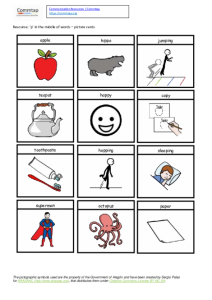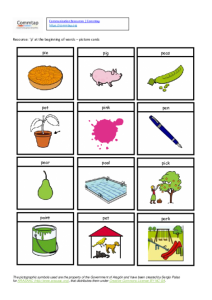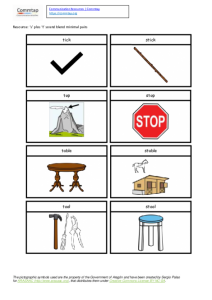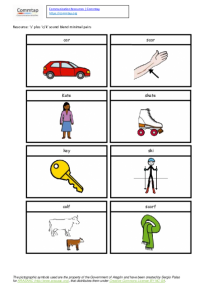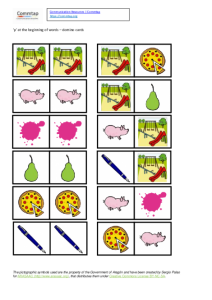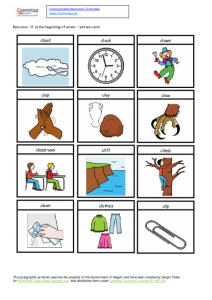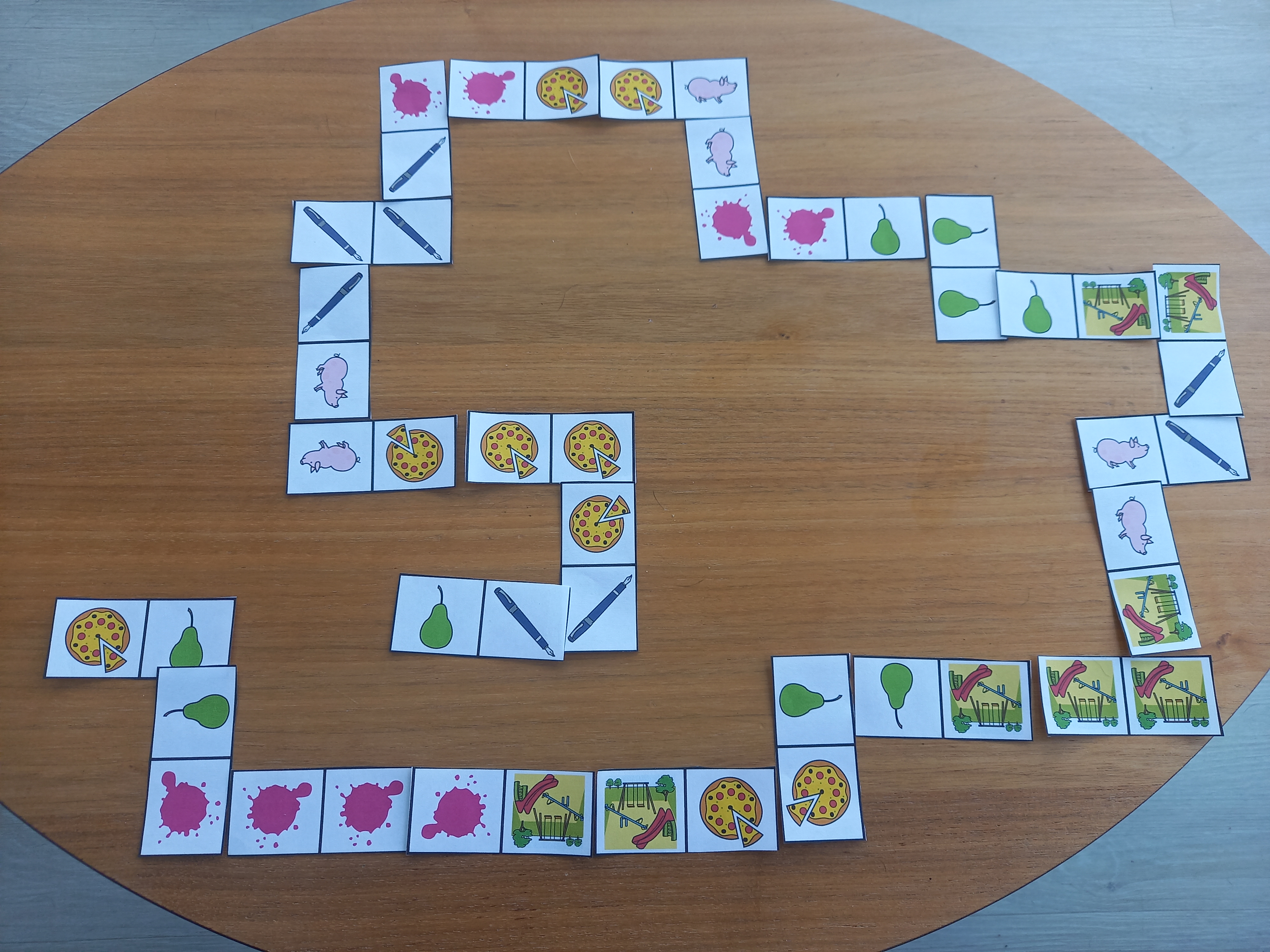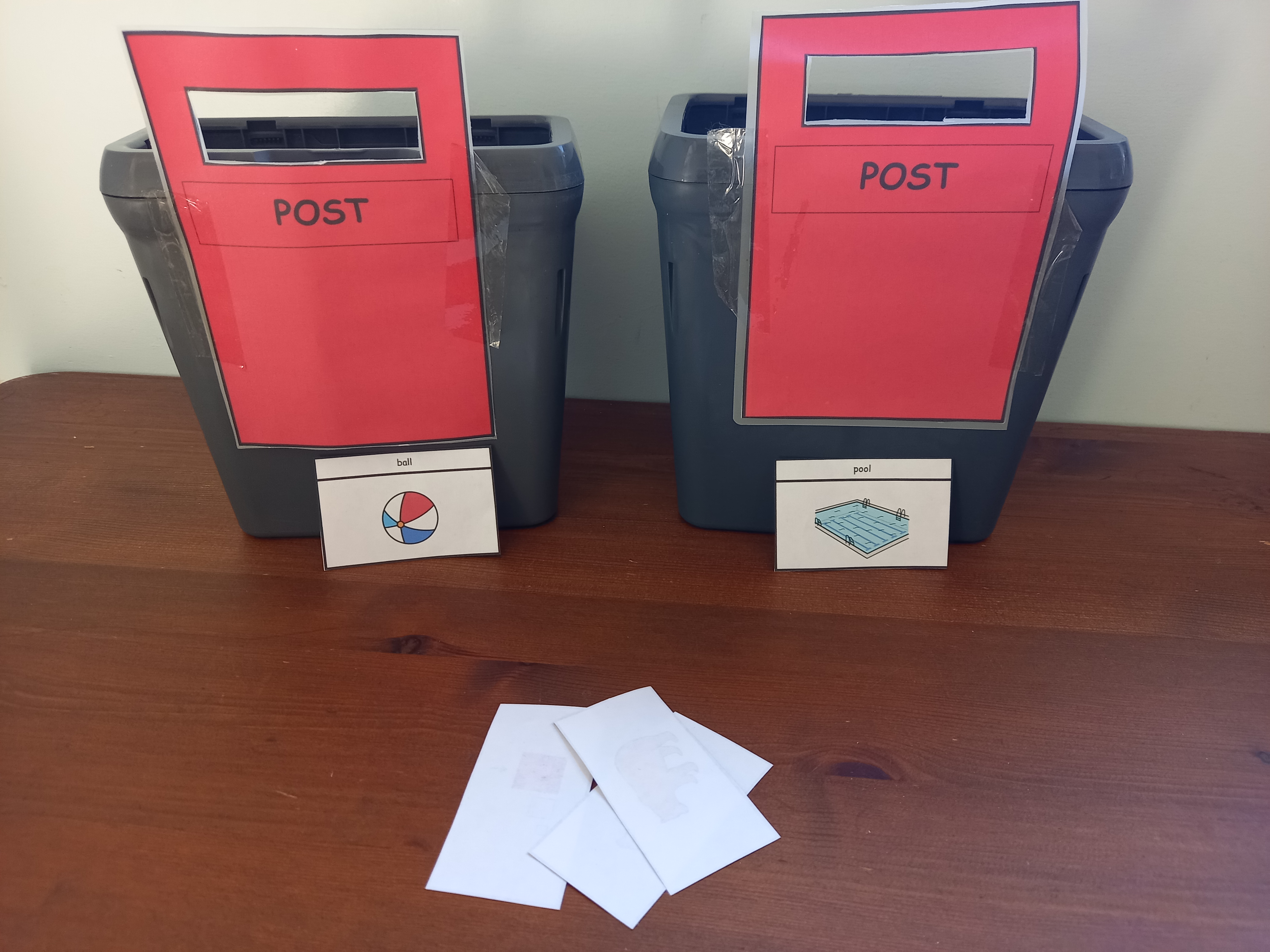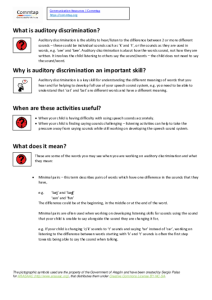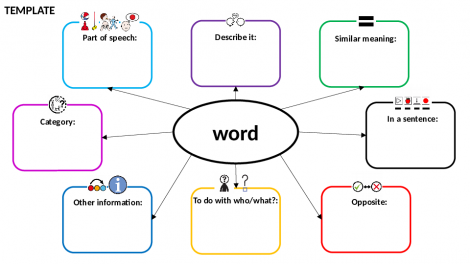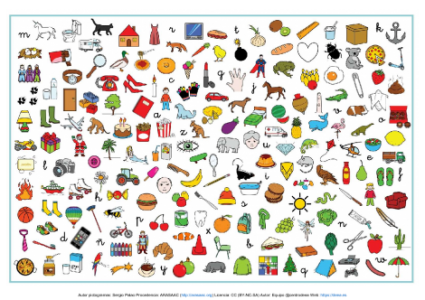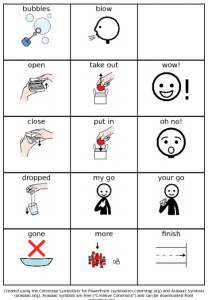Search
User login
Topic “Small group”
Contains activities or strategies suitable for a small group.
Listening to words in stories and work out whether they are correct/incorrect
| Activity/strategy name and materials required | How to do the activity | Key principles for doing the activity and comments |
|---|---|---|
| Puppet Story - Puppet - Story book - Stickers |
|
Using a target sound in a single word - activities/games set 1
| Activity/strategy name and materials required | How to do the activity | Key principles for doing the activity and comments |
|---|---|---|
| Sound Dominoes |
| If your child is able to do this activity you might like to try moving on to: saying a small phrase with the target word in, e.g target word = 'car', your phrase could be, 'a red car'. Some phrase level activities can be found by clicking here.
If your child is finding this activity challenging, try the following steps: - If your child finds it challenging to say the sound, praise them for trying and say the word back with the sound used correctly for them to hear. - Talk about the sound the word starts with, e.g. 'cat' starts with a 'c' sound. - Have a go at breaking the word up for the child to copy, e.g. 'let's try and say this together, 'c' 'at'. |
| 4 in a Row! - Printable template with playing board and counters. - Words containing your child's target sound - click here for printable word cards. | If your child is able to do this activity you might like to try moving on to: saying a small phrase with the target word in, e.g target word = 'car', your phrase could be, 'a red car'. Some phrase level activities can be found by clicking here.
If your child is finding this activity challenging, try the following steps: - If your child finds it challenging to say the sound, praise them for trying and say the word back with the sound used correctly for them to hear. - Talk about the sound the word starts with, e.g. 'cat' starts with a 'c' sound. - Have a go at breaking the word up for the child to copy, e.g. 'let's try and say this together, 'c' 'at'. | |
| Washing Line - Strong string or rope - pegs - Words containing your child's target sound - click here for printable word cards. - small bag to put picture cards in | If your child is able to do this activity you might like to try moving on to: saying a small phrase with the target word in, e.g target word = 'car', your phrase could be, 'a red car'. Some phrase level activities can be found by clicking here.
If your child is finding this activity challenging, try the following steps: - If your child finds it challenging to say the sound, praise them for trying and say the word back with the sound used correctly for them to hear. - Talk about the sound the word starts with, e.g. 'cat' starts with a 'c' sound. - Have a go at breaking the word up for the child to copy, e.g. 'let's try and say this together, 'c' 'at'.
| |
| What's in the bag? Guessing Game - Words containing your child's target sound - click here for printable word cards. - bag | If your child is able to do this activity you might like to try moving on to: saying a small phrase with the target word in, e.g target word = 'car', your phrase could be, 'a red car'. Some phrase level activities can be found by clicking here.
If your child is finding this activity challenging, try the following steps: - If your child finds it challenging to say the sound, praise them for trying and say the word back with the sound used correctly for them to hear. - Talk about the sound the word starts with, e.g. 'cat' starts with a 'c' sound. - Have a go at breaking the word up for the child to copy, e.g. 'let's try and say this together, 'c' 'at'. | |
| Kim's Game - Words containing your child's target sound - click here for printable word cards. - A blanket or tea towel | If your child is able to do this activity you might like to try moving on to: saying a small phrase with the target word in, e.g target word = 'car', your phrase could be, 'a red car'. Some phrase level activities can be found by clicking here.
If your child is finding this activity challenging, try the following steps: - If your child finds it challenging to say the sound, praise them for trying and say the word back with the sound used correctly for them to hear. - Talk about the sound the word starts with, e.g. 'cat' starts with a 'c' sound. - Have a go at breaking the word up for the child to copy, e.g. 'let's try and say this together, 'c' 'at'. |
Hearing the difference between sounds in words (auditory discrimination)
| Activity/strategy name and materials required | How to do the activity | Key principles for doing the activity and comments |
|---|---|---|
| Post it! Materials: - Copy of printable minimal pairs words for the target sounds – if you are unable to print, you could draw some pictures using the pairs of words on the list. - 2 boxes/containers – you could make your own post boxes using this template and sticking it to a cardboard box. - Paper cut into envelope shapes or click here for a printable template. | Instructions: 1. Choose one pair of words, e.g. ‘door’ and ‘saw’ and attach one to the front of each box/container. 2. Explain to your child that each of the boxes has a word with a different sound. You are going to say a word and they have to post a letter into the right box. 3. Show your child how to do this. 4. Say the words in a random order so your child has to listen to the difference between the word and choose the correct one. 5. If your child gets the wrong word, talk it through with them and show them which sound you used. 6. Swap minimal pairs after a while, e.g. change ‘door’ and ‘saw’ to ‘duck’ and ‘suck’.
| |
| Racing Cars - 2 x pieces of paper and pen - 2 x toy cars or vehicles - Copy of printable minimal pairs words for the target sounds – if you are unable to print, you could draw some pictures using the pairs of words on the list. | ||
| Block Towers - some wooden/plastic building blocks. - Copy of printable minimal pairs words for the target sounds – if you are unable to print, you could draw some pictures using the pairs of words on the list.
|
What is auditory discrimination - Information Sheet
Created 12 January 2021; updated 24 October 2021.
Game for working on attention, visual skills, vocabulary and co-operation
Large set of picture symbols on an A3 sheet, plus a set of game cards - containing between six and nine items on each card.
You can use this with a small group of children - or a single child.
- Put the large sheet in front of the children.
- Give each child a small card and a set of counters.
- The children take it in turns to look for one of the items on their card on the large sheet.
- Once they have found the item, they put a counter on the item on their card.
- When it's their turn, the child can ask another child for help (but the other children should be encouraged to keep silent unless they have been asked for help).
- Carry on until each child has found (say) four items.
Source
This resource was originally created by ARASAAC.
Copyright
![]()
This work is licensed under a Creative Commons Attribution-NonCommercial-ShareAlike 3.0 Unported License.
Created 25 June 2019; updated 6 December 2024.
Language Prompt Sheets for Activities
This resource contains language prompt sheets for three activities:
- blowing bubbles;
- building a tower;
- reading a book.
Use these sheets with a child to help minimise and simplify the language you are using with the child, and to give them an alternative means of talking about the activity if they need it.
The prompt sheet helps you to think of different types of words and phrases you can use with the child - including verbs (action words), words for commenting, words for taking turns and words for starting and finishing.
These examples use Arasaac picture symbols and Mulberry picture symbols (both free "Creative Commons" symbols sets). They were created using the Commtap Symboliser for PowerPoint.
Created 30 September 2018; updated 22 October 2021.
For child to look at their peers and use their names when in a turn taking activity
| Activity/strategy name and materials required | How to do the activity | Key principles for doing the activity and comments |
|---|---|---|
| Play a game with adult supervision Marble run; Bricks for sharing building and knocking down a tower; Any lotto game where pictures have to be matched; Skittles; Pushing cars down a run/pipe. pictures of children taking part |
| Keep turns short and snappy so children don't need to wait too long. Keep the time spent on the whole game short and snappy so children don't get bored. Support good waiting by saying "you are waiting..." sometimes the child will find it easier to wait if they have something to hold while they wait - this could be a waiting symbol.
|
Support Commtap to keep it online
Thank you for visiting Commtap.
Please read this message as it is extremely important.
- Visitor donations mean we can continue to host over 1,000 free activities to support speech, language, and communication development.
- Visitor donations mean we can continue to provide free resources to address a wide range of communication needs, including limited speech or language, interaction challenges, and needs associated with conditions such as developmental language disorder, autism, and cerebral palsy.
- Visitor donations mean we can continue to provide resources to support the work of speech and language therapists, teachers, teaching assistants, parents, and carers.
- Visitor donations mean we can continue to provide the free key word sign dictionary (bks.org.uk) which has over 2,000 Makaton and Signalong signs.
We know that not everyone is able to afford to pay to access these resources, however, if you can, please make a donation to keep the site going.
Thank you
Google ads on this page are provided by Google Adsense - and their presence does not imply any endorsement by Commtap. Report a problem with an ad on this page. Log in (for free) to avoid seeing Google ads.
